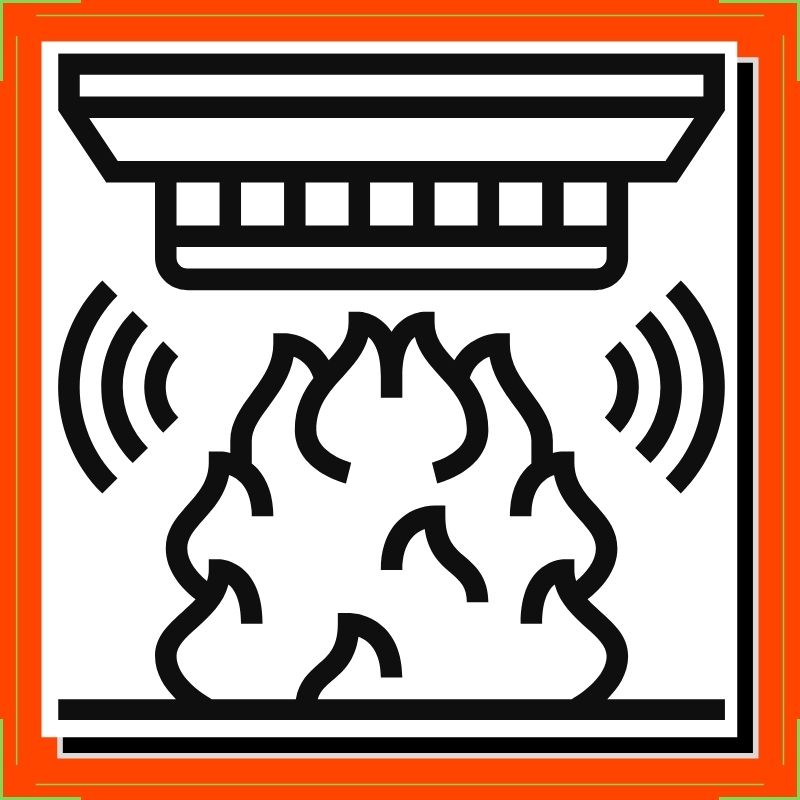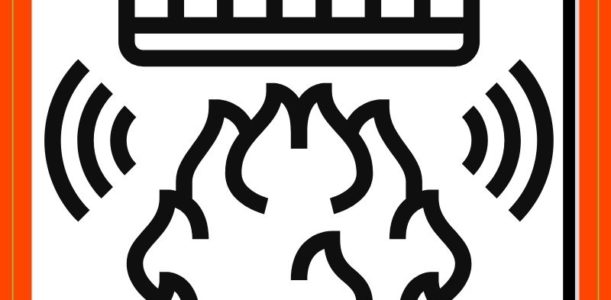
Research shows that low frequency tones are more effective than the 3,100 Hz higher frequency tones commonly used in smoke alarms at waking people with hearing impairments as well as people suffering with hearing loss. Audible evacuation signals of 520 Hz square wave tone were effective at waking hard-of-hearing people in the study 92% of the time.
Code Requirements for Low Frequency Smoke Alarms
The National Fire Protection Association, NFPA, details the accommodation requirements for low frequency fire and smoke alarms. NFPA 72, the National Fire Alarm and Signaling Code, began to require that a temporal-three sound produced at high frequency of about 3,150 Hz be used in building evacuation signals. Due to continued research, revisions were made to the 2010 NFPA72 edition, requiring low frequency smoke alarms at 520 Hz for single and multiple station alarms or alarms which were not connected to a building fire alarm where occupants are known to have a hearing impairment. Research over the last 20 years concludes that these low frequency alarms are more effective at waking people who are sleeping than the traditional alarms, especially people in high risk groups.
The 2013 edition of NFPA72 required all audible appliances initiated by the building fire alarm located in sleeping areas to be at a low frequency of 520 Hz. This broadened the use of low frequency alarms although applied only to areas where the alarm is intended to wake occupants sleeping and only when initiated by smoke alarms, not by the building fire alarm system, in sleeping areas where people had mild to severe hearing loss.
The 2021 edition of NFPA 101, Life Safety Code, makes the use of low frequency smoke alarms much more consistent in all sleeping areas. These most recent changes require that when occupancy mandates the use, audible alarms in sleeping areas initiated by the building fire alarm system or a smoke alarm must provide a low frequency 520 Hz alarm. NFPA 101 contains two residential occupancy chapters for dormitories, hotels and new apartment buildings which are now required to use low frequency alarms for audible notifications when initiated either by both the building fire alarm system and smoke alarms.
The difference between the NFPA 72 and the 2021 edition of NFPA 101 are that NFPA 101 now requires that all audible alarms in sleeping areas initiated by smoke alarms be a low frequency 520 Hz regardless of the hearing capabilities of occupants. NFPA 72 required low frequency smoke alarms only in areas where occupants had hearing loss.
The challenge here is that a low frequency smoke alarm of 520 Hz requires extra electrical power which makes battery operated alarms difficult. There are a number of alternative solutions such as to use smoke detectors with system horns, an integral sounder base or to connect speakers to an in-building fire alarm EVAC system.
HRSS as your fire and life safety security provider can design a code compliant fire alarm system based on these most recent updates, your building and occupancy. We offer comprehensive fire and life safety services to commercial properties in and around Chicago. Contact us to learn more about building fire and alarm requirements including low frequency smoke alarms.



